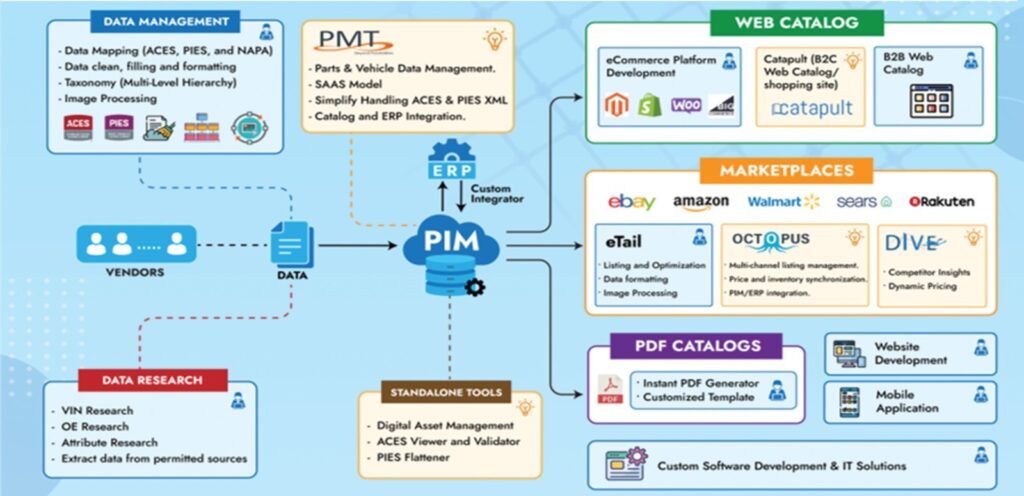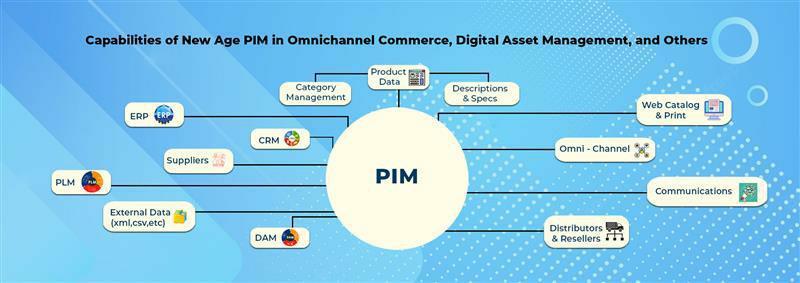Capabilities of New Age PIM in Omnichannel Commerce, Digital Asset Management, and Others
Earlier we saw about using AI to focus on customers and enrich the experience of shopping for the product leading to increased sales. Focusing on the potential customer is important, but the customer’s main priority is the product and its pricing. If the customer finds little or incomplete information, technical details, lack of images, or just a single image about the product, the potential customer may skip the product due to lack of details despite the product offering some positive aspects. This scenario leads to a bad customer experience. Product information should be complete and captivating. Hence, a good product information experience is at the heart of a good customer experience.
Role of Digital Asset Management in PIM
The presence of images impacts the customer’s decision making and hence the sales of the supplier. While the PIM is designed for managing product information in an accurate, consistent, and updated manner across all sales channels, a digital asset management (DAM) system enables managing, organizing, and sharing large media of the organization to its internal and external stakeholders. While both systems have overlapping functions, their main purpose differs. Integrating the two highly complementary systems allows the complete exploitation of the synergy of functions and benefits. This integration allows for a single source of call and seamless pushing of synchronized product data and information to all channels. This allows for exalted product and customer experience.
Need for a Modern PIM Automotive
Even though eCommerce has taken the market by storm, product catalogs have held their own and marketing and product management departments need a tool for efficient creation of captivating and stunning product catalogs. This is achieved by a PIM enabled with tool that automates quick, efficient creation, and updating of digital and pdf catalogs for print. If automotive PIM also allows for quick and efficient creation of B2B and B2C online stores, it will save huge supply costs, time, and other associated challenges.
PIM and Omnichannel Commerce
The modern needs of product management do not stop here. Updated accurate product data needs to be pushed and published in all marketing and communication channels in a consistently. The PIM needs to be enabled with omnichannel commerce publishing tool to manage marketplace or eCommerce listings. If the tool allows for not only managing listings but also monitoring them along with sales, orders, and shipping solutions, it will add layers of competitive advantage. Cloud-based automotive PIM allows access for multiple users and will be the best bet for users across multiple geographical locations.

Figure: APA Engineering’s PIM - PMT and its functionalities
A modern automotive PIM makes it easier for new products rollout with efficient data and workflow management and avoid common product launch challenges. The PIM not only allows one to constantly update existing product information but also frequently introduce new products. One of the stages in a new product development process is marketing and business analysis including promotion. PIM enables the new product entry to push to all communication channels through omnichannel commerce connector even as it is being produced with the ability to add further product information on the go and map them. This aids not only the marketing phase of NPD but also sales team clinching pre-product launch deals with retailers with accurate product information and presentations.
We can see the role of traditional PIM automotive has evolved into a modern PIM enabled with digital asset management, Catalog management, online store creation and management, omnichannel eCommerce platform connector and monitor, and new product development aid functionalities. Modern PIM is also enabled with integration tools for ERP, PLM, PDM, CRM resulting for highly competitive advantages.
If you would like to know more about PIM



